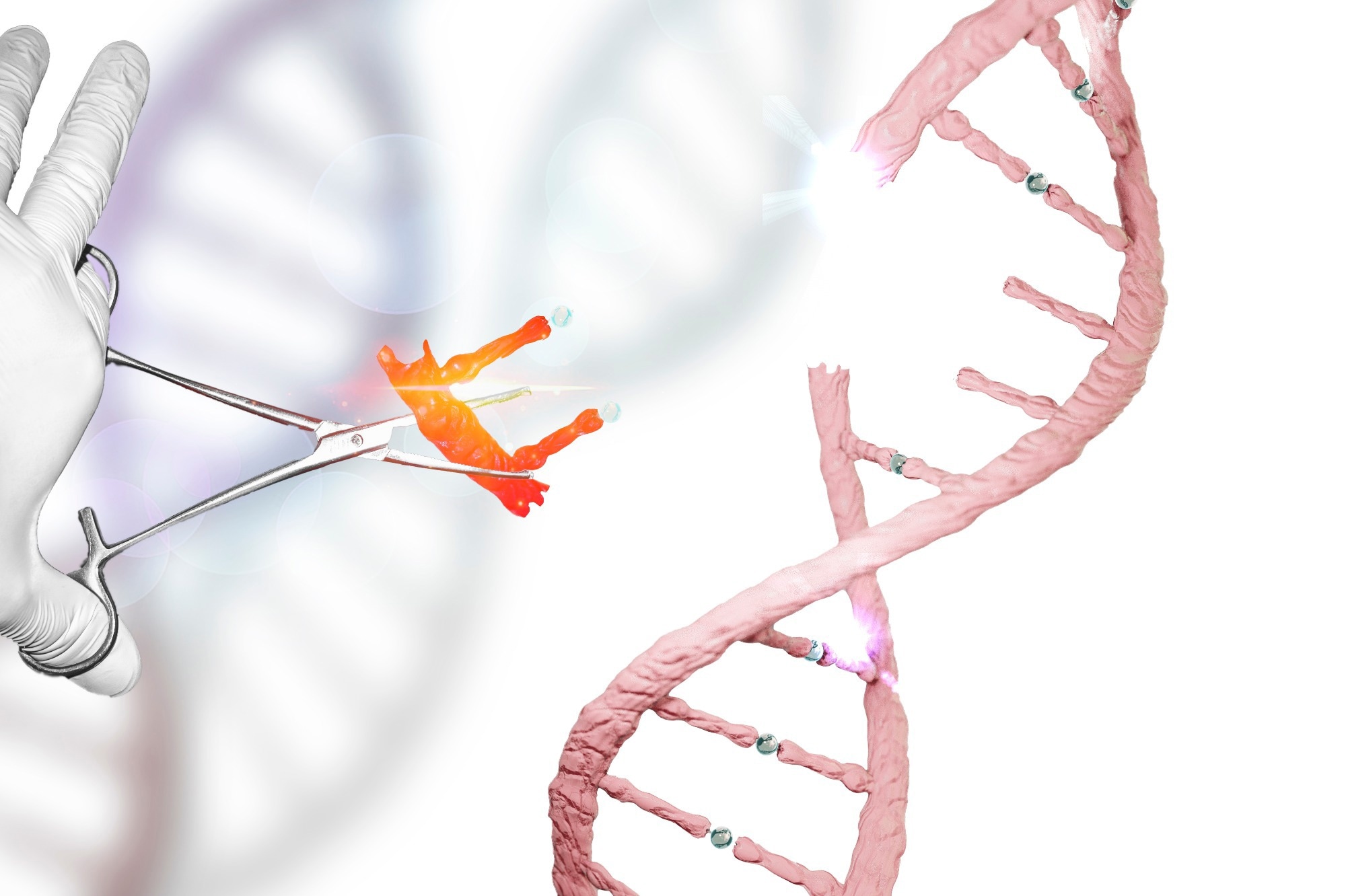In a recent study published in the journal Nature, researchers identify the mechanisms through which double-stranded break (DSB)-induced compartment formation orchestrates the deoxyribonucleic acid (DNA) damage response (DDR).
 Study: Chromatin compartmentalization regulates the response to DNA damage. Image Credit: CI Photos / Shutterstock.com
Study: Chromatin compartmentalization regulates the response to DNA damage. Image Credit: CI Photos / Shutterstock.com
Background
DNA DSBs are extremely hazardous lesions that could cause translocations or large chromosomal rearrangements, thereby increasing the risk of impaired cellular homeostasis and genetic integrity. Chromatin is vital to DNA repair, which can be accomplished by homologous recombination or non-homologous-type end-joining mechanisms; however, data on the mechanisms by which chromosomal architecture affects these activities are limited. Although the role of chromatin in DNA repair has been studied, the role of chromosomal folding in these processes is unknown.
About the study
The researchers performed gamma histone 2AX (gH2AX) chromatin immunoprecipitation followed by sequencing (ChIP-seq) and direct DSB mapping to detect DSBs. Hi-C data collected from the human DIvA cell line were used to study three-dimensional (3D) genome structure, with hydroxytamoxifen (OHT) added to cause numerous DSBs at identified sites.
The role of phosphoinositide 3-kinase (PI3K)-like protein kinases in DSB response was examined using Hi-C analysis in the presence of ataxia-telangiectasia-mutated (ATM) and DNA-dependent protein kinase (DNA-PK), both of which impact H2AX accumulation at DSBs.
Endogenous DSB hotspots in untreated DIvA cells were identified using phosphorylated ATM (pATM) ChIP-seq analysis. In addition, 53 binding protein (53BP1)-green fluorescence protein (GFP) DIvA cells were imaged live using random illumination microscopy (RIM).
Half-fluorescence recovery after photobleaching (half-FRAP) was used to elucidate the processes that cause DSB clustering. Ribonucleic acid (RNA)-sequencing was performed before and after DSB induction to identify genes enhanced after DSB formation.
After DSB induction, DIvA cells were subjected to high-throughput sequencing (DRIP-seq) to investigate the interaction between D-compartment development and R-loops. The effects of RNase H1 overexpression on DSB clustering and the repercussions of interrupting DSB clustering were determined by depleting the LINC complex's SUN2 component. A quantitative reverse-transcription polymerase chain reaction (RT-qPCR) assay was also performed to quantify intrachromosomal DSB illegitimate rejoining occurrences.
Study findings
ATM induces the creation of a novel chromatin compartment, referred to as the D compartment, in mammalian cells after DSBs by clustering injured topologically associating domains (TADs) adorned with 53BP1 and H2AX. Irradiation strengthened TADs across the genome.
After DSB induction, the damaged TADs, which were covered by H2AX/53BP1, established a new chromatin compartment that separated from the rest of the genome.
The D compartment was produced by a process related to polymer-polymer phase separation (PPPS) instead of liquid-liquid phase separation (LLPs). The D chromatin compartment, which was formed during the G1 phase, was unaffected by cohesion and was promoted by pharmacological DNA-PK suppression and R-loop accretion.
DDR genes enriched by the R loop physically relocated to the novel D compartment, thereby enhancing activation and giving a purpose for DSB clustering in DDR. However, chromosomal reconfiguration induced by DSB was accompanied by an increased translocation rate, which has also been observed in tumor genomes.
DSBs activated the DDR through PI3K-like proteins such as DNA-dependent protein kinase and ATM and generated gH2AX chromatin domains, facilitating signaling events like DDR focus formation and 53BP1 recruitment. Inhibiting ATM activity reduced DSB clustering, whereas inhibiting DNA-PK activity significantly enhanced DSB clustering.
The linkers of the nucleoskeleton to the cytoskeleton (LINC) complex, actin network, and phase-segregation features of 53BP1 influenced DSB clustering. The role of DSB clustering remains unknown, as the juxtaposition of DSBs may cause translocation, which questions the selective benefit of DSB clustering or repair focal fusion.
R-loop accumulation upon DSB induction was a hallmark of increased DDR genes targeting the D chromatin compartment. The compartmental rupture limited the activation of a subset of DDR genes, whereas increased D-compartment development caused DDR gene hyperactivation. DDR-upregulated gene relocalization within the D compartment could explain some translocations in cancer genomes.
Conclusions
Based on the study findings, chromosomal design is critical in DNA repair mechanisms, particularly in regard to DSBs and DDR. ATM facilitates the repair of damaged TADs, which cluster within the nuclear space. ATM and cell cycle-regulated DSB clustering control DSB clustering.
DDR genes were separated by D compartmentalization, which is facilitated by the R loops in activated D genes. Changes in chromosomal architecture caused by DSBs could also jeopardize genomic integrity through translocations.
The self-segregation of H2AX/53BP1-related domains from chromatin leads to the generation of the D compartment that recruits and activates DDR-related genes, particularly those susceptible to forming R-loops. The physical relocation of R-loop-enriched DDR-activated genes within the D compartment enables accurate DDR adjusting concerning DSB loading and persistency. However, this event increases the risk of potential translocations, as TAD coalescence and loop extrusion could place linearly distant DSBs into close contact.
Journal reference:
- Arnould, C., Rocher, V., Saur, F., et al. (2023). Chromatin compartmentalization regulates the response to DNA damage. Nature. doi:10.1038/s41586-023-06635-y